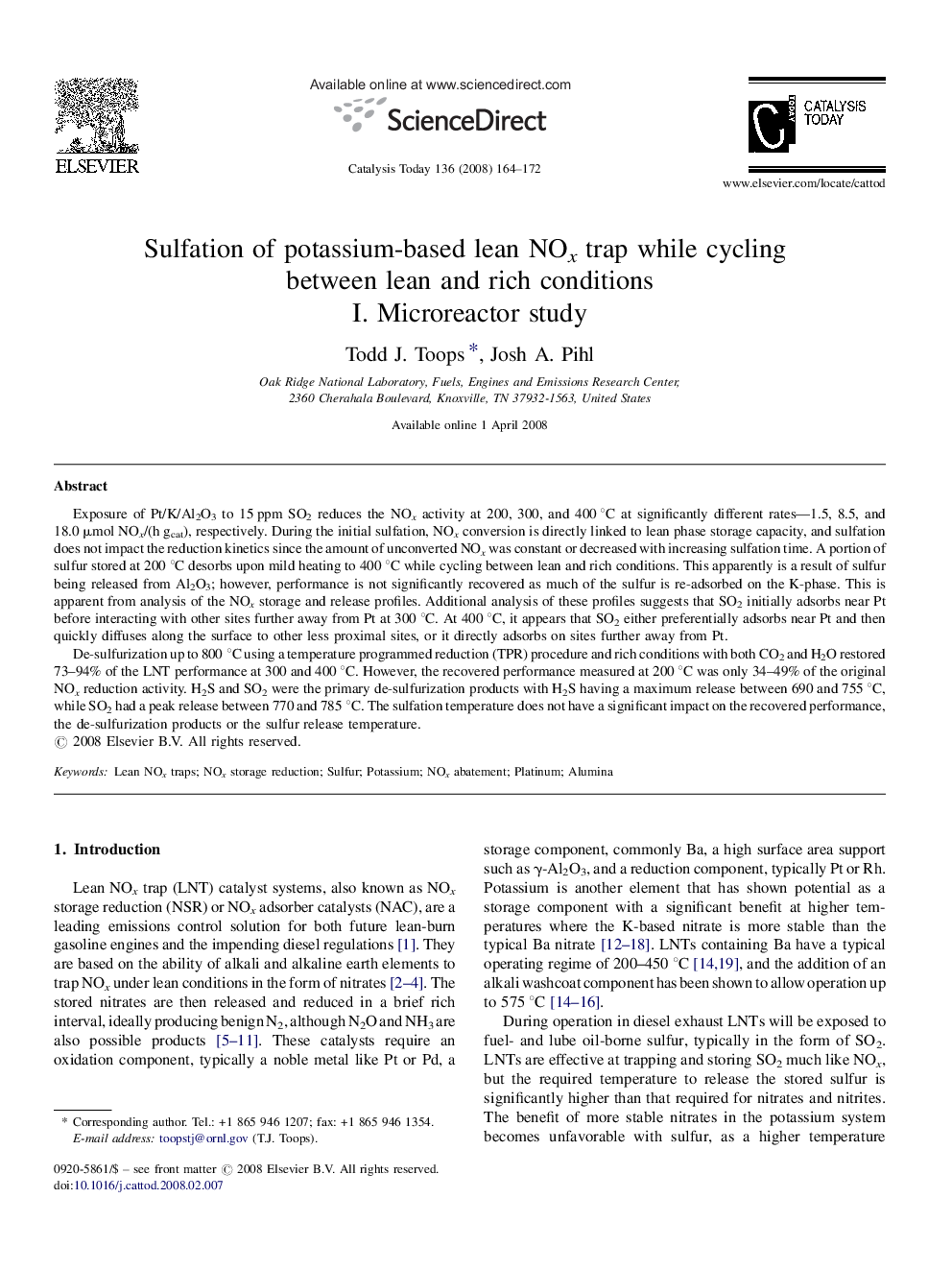| Article ID | Journal | Published Year | Pages | File Type |
|---|---|---|---|---|
| 57648 | Catalysis Today | 2008 | 9 Pages |
Exposure of Pt/K/Al2O3 to 15 ppm SO2 reduces the NOx activity at 200, 300, and 400 °C at significantly different rates—1.5, 8.5, and 18.0 μmol NOx/(h gcat), respectively. During the initial sulfation, NOx conversion is directly linked to lean phase storage capacity, and sulfation does not impact the reduction kinetics since the amount of unconverted NOx was constant or decreased with increasing sulfation time. A portion of sulfur stored at 200 °C desorbs upon mild heating to 400 °C while cycling between lean and rich conditions. This apparently is a result of sulfur being released from Al2O3; however, performance is not significantly recovered as much of the sulfur is re-adsorbed on the K-phase. This is apparent from analysis of the NOx storage and release profiles. Additional analysis of these profiles suggests that SO2 initially adsorbs near Pt before interacting with other sites further away from Pt at 300 °C. At 400 °C, it appears that SO2 either preferentially adsorbs near Pt and then quickly diffuses along the surface to other less proximal sites, or it directly adsorbs on sites further away from Pt.De-sulfurization up to 800 °C using a temperature programmed reduction (TPR) procedure and rich conditions with both CO2 and H2O restored 73–94% of the LNT performance at 300 and 400 °C. However, the recovered performance measured at 200 °C was only 34–49% of the original NOx reduction activity. H2S and SO2 were the primary de-sulfurization products with H2S having a maximum release between 690 and 755 °C, while SO2 had a peak release between 770 and 785 °C. The sulfation temperature does not have a significant impact on the recovered performance, the de-sulfurization products or the sulfur release temperature.
